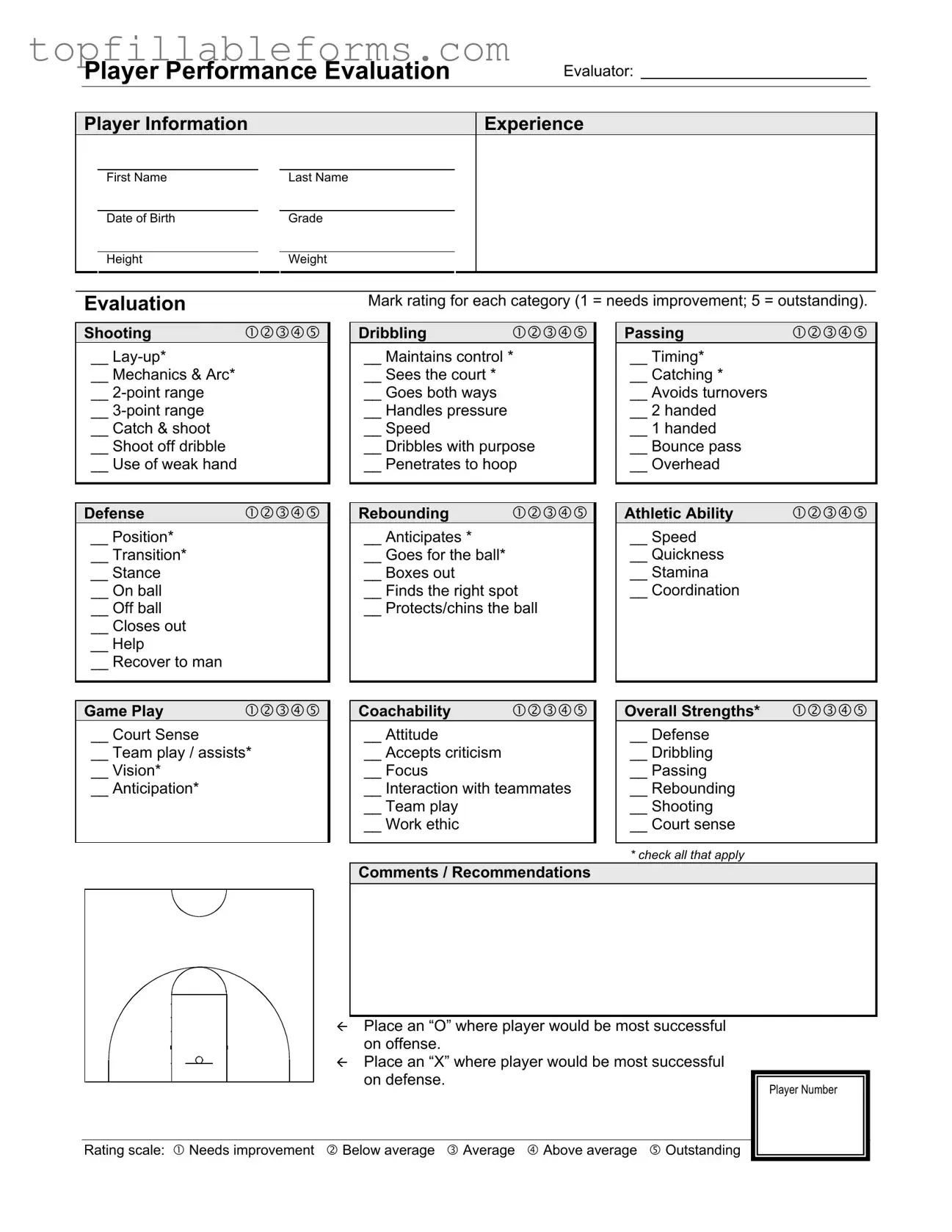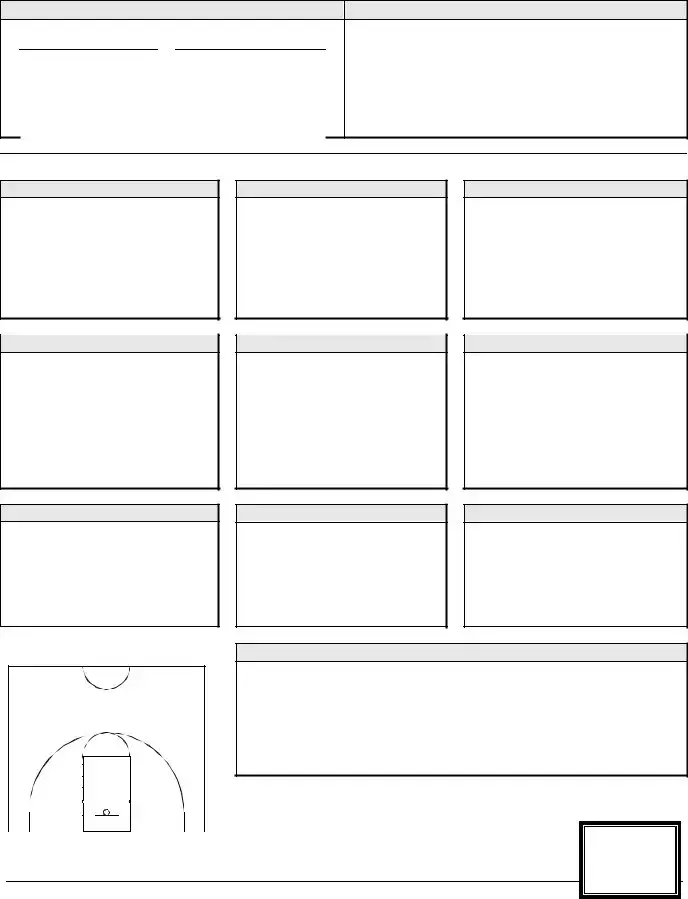Printable Basketball Evaluation Form in PDF
The Basketball Evaluation Form is a comprehensive tool designed to assess a player's skills and performance in various aspects of the game. It provides evaluators with a structured way to rate key areas such as shooting, defense, dribbling, and overall athletic ability. Utilizing this form can help coaches identify strengths and areas for improvement, ultimately guiding players on their journey to enhance their basketball skills.
Open Basketball Evaluation Editor Here

